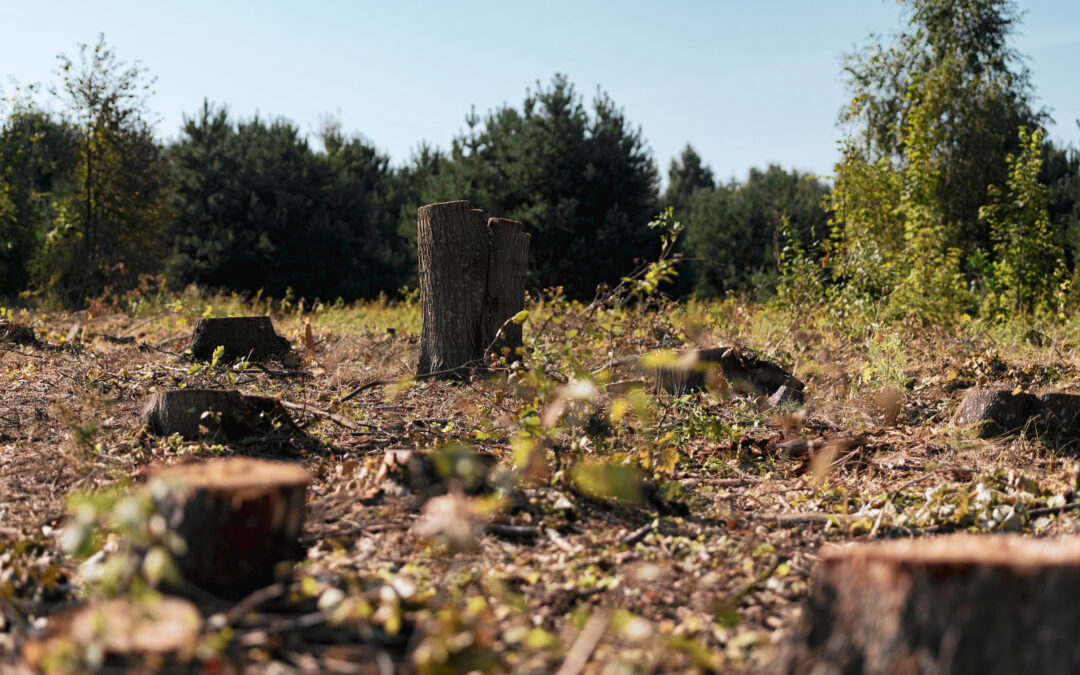By Wojciech Kość
Throughout Poland, local authorities are chopping down trees as a “safety” measure, saying that they are in poor health and could cause serious damage. But scientists and activists criticise this practice, saying it is not only unnecessary but counterproductive, as it exacerbates the problems caused by climate change.
In late August, local media in Gdańsk raised the alarm: local authorities were planning to fell 300 trees, some of them at least a century old, along a section of road north-west of the city.
If you have ever driven, cycled, or simply walked anywhere in Poland’s northern Pomerania region, the tree-lined roads are impossible to miss. Often planted back in the 19th century, when the region was still part of Germany, the trees have now grown tall and thick to become one of Pomerania’s landmarks.
“These beautiful trees…are older than the grandparents of those who decide to fell them,” the writer Stanisław Łubieński told Gazeta Wyborcza. “Whole worlds inhabit them: birds, invertebrates, mushrooms. Under normal conditions, they would be natural monuments.”
It was Łubieński who, driving through the region, spotted that the trees on either side of the road had numbers painted on them, an oft-used way to mark those slated for removal. He alerted the media and started a petition to save the avenue.

Kuślin, near Poznań (photo: Pracownia Dendrologiczna Lynx Ryszard Dudzic)
In response to the backlash, the local road authorities claimed that the trees were in poor health and rotting inside, and that high winds could cause serious damage. Removing them was a “preventative measure”.
“This is commonplace countrywide”
When asked about this explanation, Agata Brzezińska, head of the Aquila Foundation, a nature protection NGO, sighs.
“This is commonplace where we work, which is the Wrocław county. Sadly, there is good evidence to suggest that it is commonplace countrywide,” Brzezińska told Notes from Poland.
The evidence Brzezińska refers to is fragmentary, because there are no data at the national level on how many trees are being felled in Poland every year outside of the forests (where logging has also been on the rise, according to a recent study in Nature).
Yet national and local media reveal do much to reveal that, as Brzeziński and other activists note, this is clearly a widespread issue. A search of local news about felling of trees in Polish towns and cities returns close to 100 articles from nearly as many locations published in the past 30 days alone.
Typical reasons given for removal include safety and clearing the land for investment, such as a new or upgraded road. Yet the loss of trees causes not only aesthetic hardship, it also damages the local environment, as they help retain rainwater and the reduce the so-called heat island effect.
“Too often, cost calculation wins”
The news reports also document what seems a growing citizens’ movement against the removals – sometimes even pulling off a victory over what Brzezińska describes as a mix of ignorance and laziness.
“Earlier this year we saved an avenue in Unisław Śląski [in Lower Silesia] from being destroyed after local authorities simply ordered that 53 trees be chopped down – they are around 90 years old – without properly analysing the state of their health,” Brzezińska said.

Chrząstawa Wielka, near Wrocław (photo: Agata Brzezińska)
Brzezińska’s foundation took the matter to court and won, with the local authorities ordered to reconsider their decision to cut the trees down.
“The court also spelled out what exactly is wrong with inconsiderate getting rid of trees in general,” Brzezińska said.
In its pronouncement, the court pointed out that trees by the roadside “prevent drivers from being blinded by headlights of vehicles coming from the opposite direction and protect the road from wind and snow as well as from excessive noise, air, water and soil pollution”.
They are also a valuable element of the landscape and “should be protected carefully,” the court said. These are the basics of what anyone responsible for trees should know, Brzezińska says. “Yet, too often, cost calculation wins,” she says.
Extreme topping
Cutting down trees completely is not the only problem. Another common practice is extreme topping – meaning removing the whole tops of trees. A case in point was the indiscriminate topping of several trees in Kuślin, a village in the Poznań region in western Poland. Several linden trees had their entire crowns removed, leaving hardly anything but bare trunks.
The local authorities said the trees were topped for “safety” reasons, local media reported. “Safety” seems the most frequent explanation of removing or drastically topping trees in Poland, activists say.
“According to the Polish laws on protection of nature, you cannot top more than 30% of a tree’s crown. If you do so, you’re damaging it, and if the topping results in removal of more than 50% of the crown, that is destroying a tree, according to the law,” Brzezińska said. Yet many cases are not formally reported to the authorities; where they are, cases are often discontinued without action being taken.
In the debate about the Kuślin trees that ensued in social media, defenders repeated the safety argument, adding that the trees would grow back. That is nonsense, according to Brzezińska.
“When you get rid of a tree’s crown just like that, it’s not coming back. What people think is a tree growing back is just offshoots, which are weak and will never grow into the branches that were cut off,” she points out.
Kuślin is by no means an isolated incident. In the past 12 months, there has been similar damage reported in Wrocław, Minkowice Oławskie, Komorniki, and many other locations.
Exacerbating the effects of climate change
According to a scientific paper on the subject by Marek Kosmala, Edyta Rosłon-Szeryńska, and Marzena Suchocka from the Warsaw University of Life Sciences, such damage weakens the trees, allowing infiltration of harmful fungi or insects,
Indiscriminate felling of trees or damaging them in the name of safety is particularly inadvisable when Poland is literally feeling the heat of climate change.

Lubliniec (photo: Orsynia Węgrzyn)
Andrzej Gąsiorowski, a lawyer living in Sochaczew near Warsaw, and also one of the founders of FOTA4Climate, an environmental movement, says cutting trees should be all but banned altogether.
“We must not cut trees because they mitigate the effects of climate change. Trees are also vital for maintaining biodiversity in cities,” said Gąsiorowski, who runs a blog highlighting cases of the “pathological and compulsive human activity that cutting trees is”.
“We need trees to diminish the heat island effect in cities and reduce pollution first and foremost. There are 44,000 premature deaths in Poland because of air pollution and yet we’re cutting trees countrywide,” says Marzena Suchocka.
“These trees are irreplaceable”
“Trees, especially old ones, are irreplaceable. Cut down a 200-year-old tree and no amount of new trees will ever replace it unless you want to wait 200 years for them to start delivering the same amount of ecosystem services,” she adds.
Ecosystem services, according to an EU definition, are “the direct and indirect contributions of ecosystems to human well-being… supporting directly or indirectly our survival or quality of life”.
An ecosystem service include such vital mechanisms as climate regulation and water purification – for which trees are indispensable.
Suchocka also rejects the common justification of cutting down trees on the grounds of “safety”. This is, she says, simply the result of authorities choosing the cheapest and easiest solution rather than the best one, which is to explore other solutions first.
“Trees are cut too readily in Poland, despite there being a number of things you can do to minimise the risk that an unhealthy tree can pose. For example: a tree that you know is not well is hanging over a bench or a path – move the bench, re-route the path. You can also support the tree so that it doesn’t fall or reshape its crown so as to give it stability. It’s that simple,” Suchocka said.
“Too often the approach is: cut a tree down, fit air conditioning instead,” says Gąsiorowski. “You might have fixed your small local problem but you’re contributing to the global one.”
Main image credit: Martyna Niećko / Agencja Gazeta




















